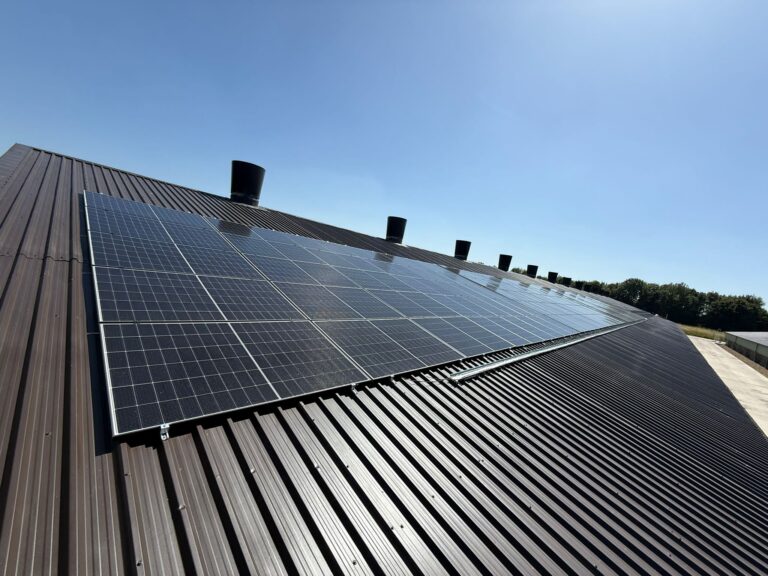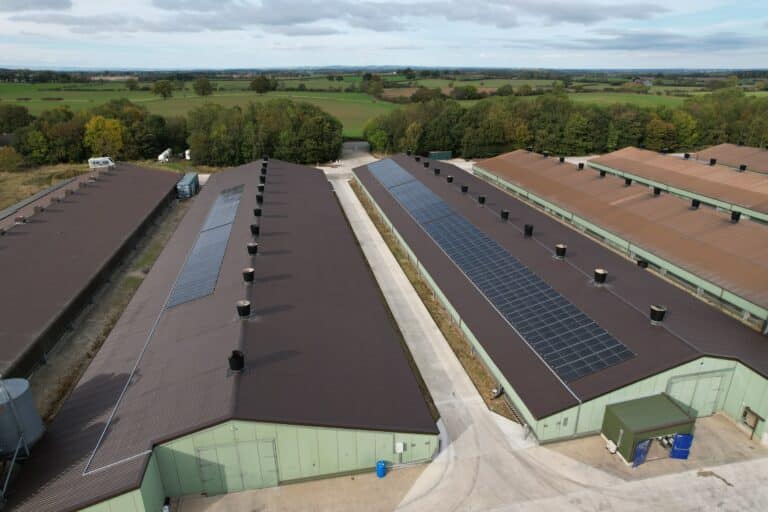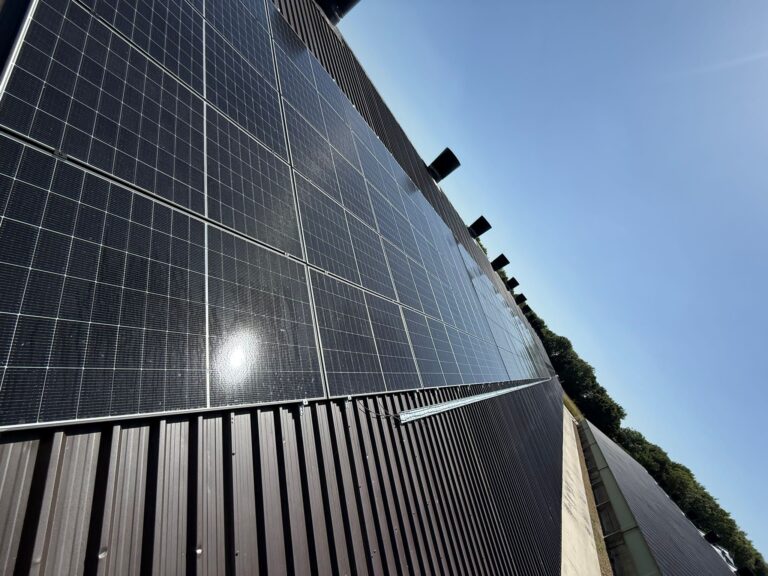Which Types Of commercial Solar Panels Are Best for UK Businesses
The best type of solar panel for commercial use in the UK is monocrystalline solar panels. These panels offer the highest efficiency, great durability, and dependable performance across different weather conditions, making them a good choice for businesses that want to increase energy output and get the best return on investment.
However, the right choice ultimately depends on your business’s energy needs, available space, and budget. UK companies can select from monocrystalline, polycrystalline, thin film, Building-Integrated Photovoltaics (BIPV), and bifacial solar panels. Each type has its own advantages, ranging from cost-effectiveness and flexibility to creative building integration and better energy yield.
Choosing the most suitable system can greatly lower electricity bills, boost sustainability, and aid long-term energy independence. This guide outlines the main types of commercial solar panels, detailing their benefits and best applications to help UK businesses make smart, future-ready decisions when investing in solar energy.

Types of Commercial Solar Panels: A Detailed Comparison
Understanding the different types of commercial solar panels is important for businesses wanting to invest in solar energy. Each type has unique benefits, efficiency levels, and suitability for certain installations. The table below offers a clear comparison to help you find the best option for your premises:
Type of Commercial Solar Panel | Efficiency | Cost | Ideal Use | Weather Performance in the UK |
Monocrystalline Silicon Solar Panels | High | Higher upfront cost | Limited roof space, high energy demand | Excellent in low light, durable in wind, hail, snow, and ice |
Polycrystalline Solar Panels | Medium | More affordable | Large roof areas, cost-conscious projects | Good in most conditions, slightly lower output in low light |
Thin Film Solar Panels | Lower | Variable | Lightweight or unconventional installations | Performs well in diffuse light and moderate temperatures |
Building-Integrated Photovoltaics (BIPV) | Medium | Higher upfront cost | South-facing walls, facades, windows, awnings | Effective in sunlight exposure, integrated with building structure, long lifespan |
Bifacial Solar Panels | High | Higher upfront cost | Flat roofs, reflective surfaces, carports, ground mounts | Captures both direct and reflected light, performs well even in diffuse UK sunlight |
Monocrystalline vs Polycrystalline Solar Panels
When choosing the right type of commercial solar panel, it’s important to understand the differences between monocrystalline and polycrystalline options. Key points include:
Efficiency:
Monocrystalline panels offer higher energy output per square metre, ideal for limited roof space or high-demand installations. Polycrystalline panels are slightly less efficient but effective for larger roofs.
Cost:
Monocrystalline panels typically have a higher upfront cost, while polycrystalline panels are more budget friendly.
Durability:
Both types are tested for wind, hail, snow, and ice resistance to ensure long-term reliability.
Weather Performance:
Monocrystalline panels maintain better output in low-light conditions, while polycrystalline panels perform well under most UK weather scenarios.
Space Requirements:
Monocrystalline panels suit compact installations, whereas polycrystalline panels can cover larger areas economically.
Aesthetic Appeal:
Monocrystalline panels have a sleek black finish suited to modern commercial buildings, while polycrystalline panels feature a blue tint that’s more noticeable but equally effective.

Thin Film Solar Panels
Thin film solar panels offer an alternative solution for commercial installations where flexibility and lightweight design are priorities. Key considerations include:
Efficiency:
Generally lower than monocrystalline or polycrystalline panels, requiring more surface area to achieve the same energy output.
Cost:
Varies depending on application and manufacturer; can be cost-effective for specialised projects.
Installation Flexibility:
Lightweight and adaptable, suitable for unconventional roof surfaces or structures with weight limitations.
Weather Performance:
Performs well in diffuse light and moderate temperatures; adequate performance under UK weather conditions.
Ideal Use:
Best for projects where roof weight, shape, or adaptability is a factor, rather than maximising efficiency per square metre.
Appearance:
Sleek, uniform finish that blends well with modern architectural designs, offering visual appeal alongside functionality.
Building-Integrated Photovoltaics (BIPV)
BIPV systems are fully integrated into a building’s structure, including south-facing walls, facades, windows, awnings, and skylights, transforming passive surfaces into energy-generating assets.
Key features of BIPV include:





Bifacial Solar Panels
Bifacial solar panels represent a significant development in the UK’s commercial solar market. Moving beyond traditional monofacial panels, bifacial technology captures sunlight on both sides of the panel, increasing energy output and improving performance for commercial premises with reflective surfaces or high light exposure.
How Bifacial Panels Work


Benefits of Bifacial Solar Panels



Best Use Cases
Bifacial panels are especially effective in settings with strong reflected light or open exposure, including:



When to Choose Bifacial vs Monofacial



Performance and Durability
All types of commercial solar panels undergo rigorous testing to ensure long-term reliability and consistent energy output. High-quality panels are specifically designed to withstand extreme weather conditions, including:




These comprehensive tests guarantee that commercial solar panels installed in the UK will continue to deliver efficient performance year after year, providing businesses with reliable energy generation and measurable cost savings over the system’s lifetime.
Choosing the Right Type of Solar Panel for Your Business
When identifying the types of commercial solar panels that suit your premises, consider:
1. Energy Requirements:
Understand your facility’s electricity usage to determine the system size.
2. Available Roof Space or Wall Area:
High-efficiency monocrystalline panels are ideal for limited space, while polycrystalline panels can cover larger areas cost-effectively. BIPV allows utilisation of south-facing walls.
3. Budget:
Consider initial investment versus long-term savings.
4. Weather Conditions:
Assess how panels perform in your local climate, including wind, snow, hail, and cloud cover.
5. Installation Factors:
Evaluate roof or wall orientation, tilt, and structural limitations.
6. Maintenance Needs
Consider the upkeep requirements and cleaning accessibility for each panel type to maintain performance over time.
Maximising Solar Energy for Your Business
Selecting the right type of commercial solar panel can significantly reduce energy costs, lower carbon emissions, and improve your business’s sustainability profile. High-quality panels provide impressive durability, ensuring reliable performance for decades.
By investing in solar energy, commercial premises can achieve predictable energy savings while demonstrating a strong commitment to environmental responsibility.
Making the Right Choice for Your Business
Understanding the types of commercial solar panels available and their performance characteristics is crucial for businesses in the UK. Monocrystalline silicon solar panels typically offer the highest efficiency and long-term reliability, while polycrystalline, thin film, BIPV, and bifacial systems provide practical alternatives depending on space, budget, and installation requirements.
We make the process of choosing the most efficient solar panel simple and straightforward by providing FREE, non-binding quotes.
Simply fill our user friendly contact form, stating your needs and preferences, and we will get back to you with the sharpest quotes. We will get you the best deal.
